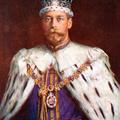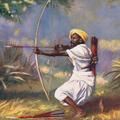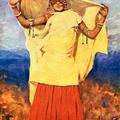A Typical Maharajah
An early Tuck's painted postcard, and one of the earliest numbered series (2623) with an Indian theme. The theme suggests that the cards represents the Delhi Darbar of 1903 as other cards include the Viceregal Party.
The message on this card










